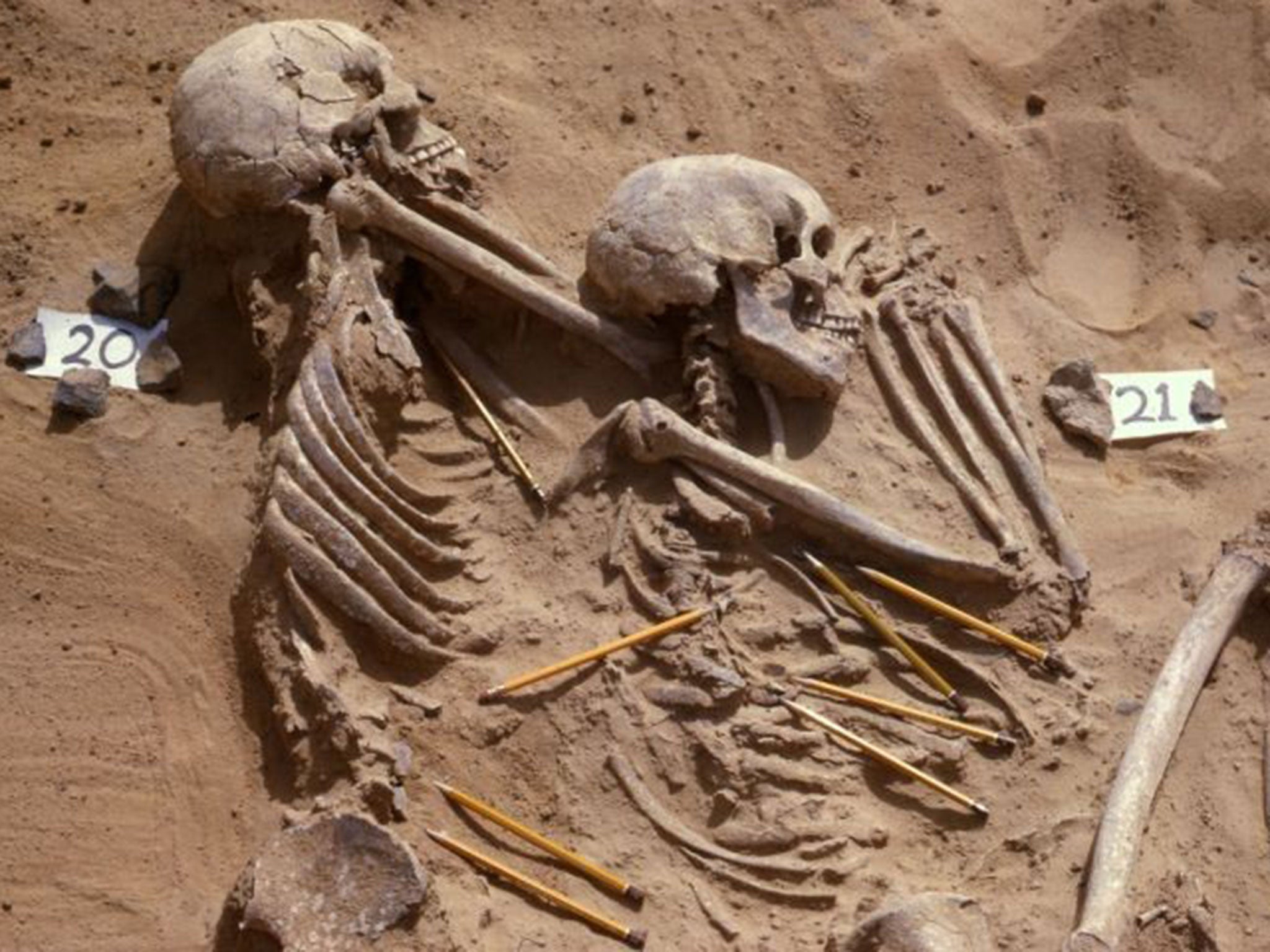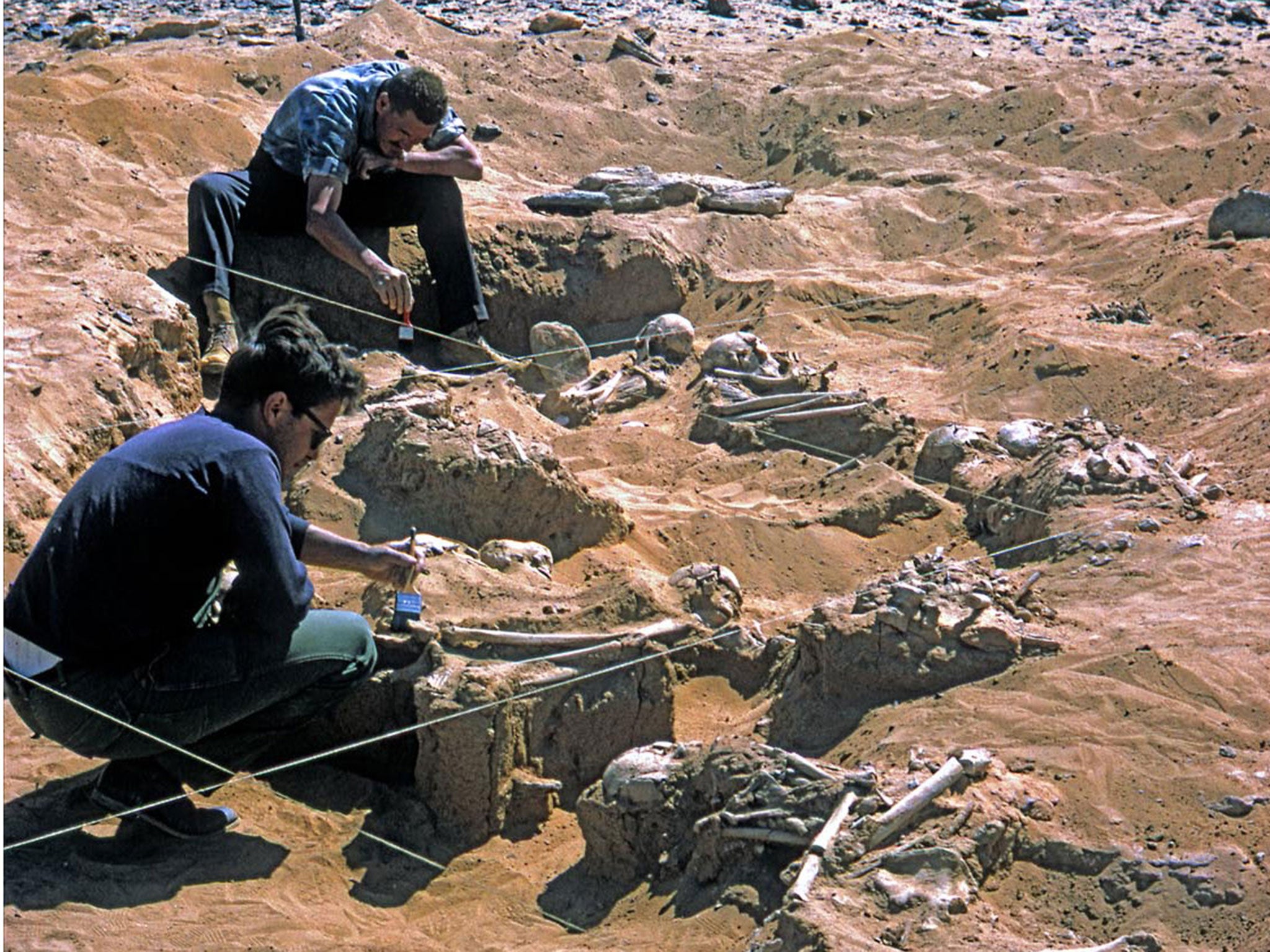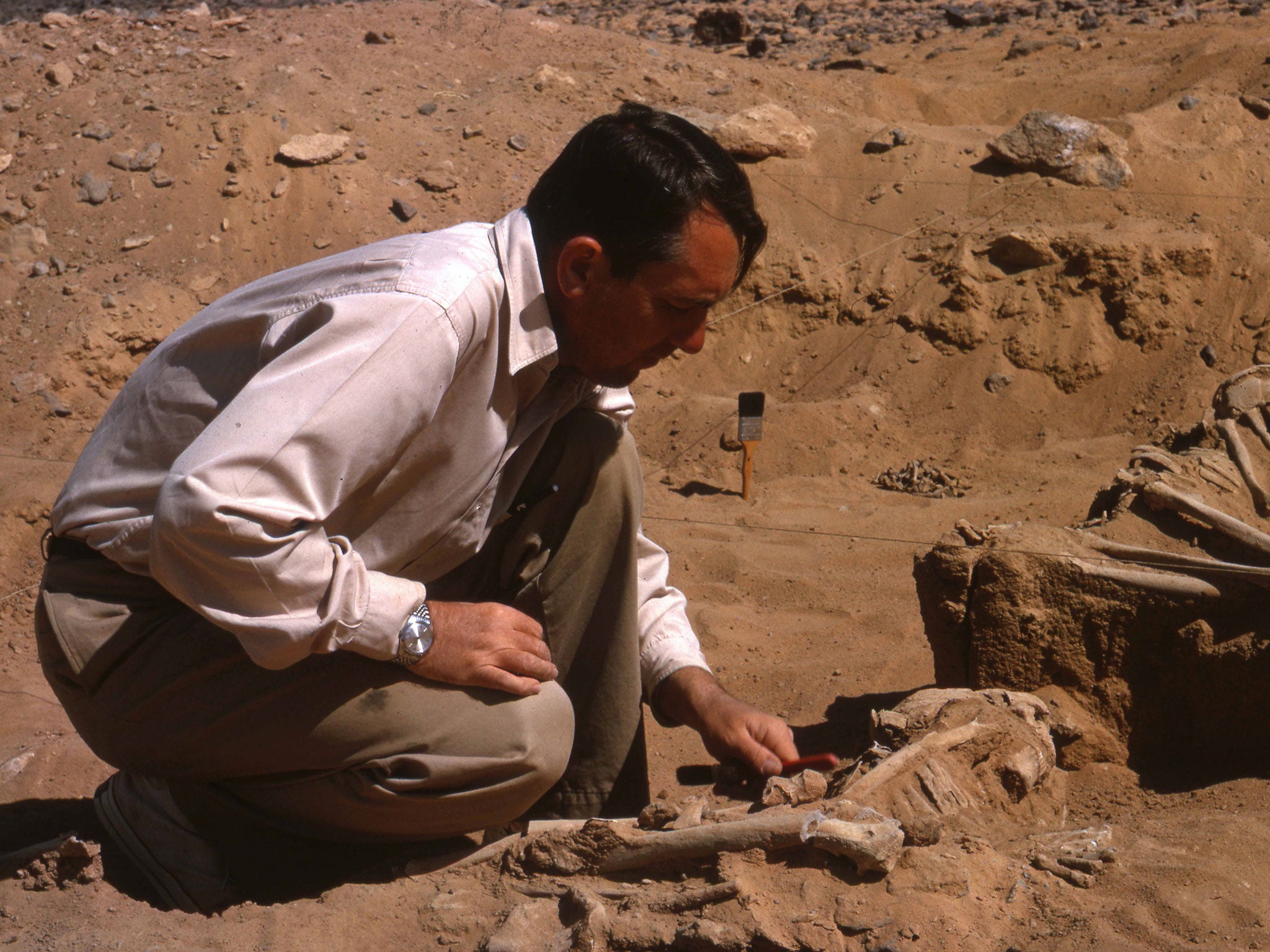Saharan remains may be evidence of first race war, 13,000 years ago
The skeletons – from the east bank of the Nile in northern Sudan – are from victims of the world’s oldest known relatively large-scale human armed conflict

Your support helps us to tell the story
From reproductive rights to climate change to Big Tech, The Independent is on the ground when the story is developing. Whether it's investigating the financials of Elon Musk's pro-Trump PAC or producing our latest documentary, 'The A Word', which shines a light on the American women fighting for reproductive rights, we know how important it is to parse out the facts from the messaging.
At such a critical moment in US history, we need reporters on the ground. Your donation allows us to keep sending journalists to speak to both sides of the story.
The Independent is trusted by Americans across the entire political spectrum. And unlike many other quality news outlets, we choose not to lock Americans out of our reporting and analysis with paywalls. We believe quality journalism should be available to everyone, paid for by those who can afford it.
Your support makes all the difference.Scientists are investigating what may be the oldest identified race war 13,000 years after it raged on the fringes of the Sahara.
French scientists working in collaboration with the British Museum have been examining dozens of skeletons, a majority of whom appear to have been killed by archers using flint-tipped arrows.
The bones – from Jebel Sahaba on the east bank of the Nile in northern Sudan – are from victims of the world’s oldest known relatively large-scale human armed conflict.
Over the past two years anthropologists from Bordeaux University have discovered literally dozens of previously undetected arrow impact marks and flint arrow head fragments on and around the bones of the victims.
This is in addition to many arrow heads and impact marks already found embedded in some of the bones during an earlier examination of the skeletons back in the 1960s. The remains – the contents of an entire early cemetery – were found in 1964 by the prominent American archaeologist, Fred Wendorf, but, until the current investigations, had never been examined using more modern, 21 century, technology.

Some of the skeletal material has just gone on permanent display as part of the British Museum’s new Early Egypt gallery which opens officially today. The bones – from Jebel Sahaba on the east bank of the River Nile in northern Sudan – are from victims of the world’s oldest known relatively large-scale human armed conflict.
Now British Museum scientists are planning to learn more about the victims themselves – everything from gender to disease and from diet to age at death. The discovery of dozens of previously undetected arrow impact marks and flint arrow fragments suggests that the majority of the individuals – men, women and children – in the Jebel Sahaba cemetery were killed by enemy archers, and then buried by their own people. What’s more, the new research demonstrates that the attacks – in effect a prolonged low-level war – took place over many months or years.
Parallel research over recent years has also been shedding new light as to who, in ethnic and racial terms, these victims were.
Work carried out at Liverpool John Moores University, the University of Alaska and New Orleans’ Tulane University indicates that they were part of the general sub-Saharan originating population – the ancestors of modern Black Africans.
The identity of their killers is however less easy to determine. But it is conceivable that they were people from a totally different racial and ethnic group – part of a North African/ Levantine/European people who lived around much of the Mediterranean Basin.

The two groups – although both part of our species, Homo sapiens – would have looked quite different from each other and were also almost certainly different culturally and linguistically. The sub-Saharan originating group had long limbs, relatively short torsos and projecting upper and lower jaws along with rounded foreheads and broad noses, while the North African/Levantine/European originating group had shorter limbs, longer torsos and flatter faces. Both groups were very muscular and strongly built.
Certainly the northern Sudan area was a major ethnic interface between these two different groups at around this period. Indeed the remains of the North African/Levantine/European originating population group has even been found 200 miles south of Jebel Sahaba, thus suggesting that the arrow victims were slaughtered in an area where both populations operated.
What’s more, the period in which they perished so violently was one of huge competition for resources – for they appear to have been killed during a severe climatic downturn in which many water sources dried up, especially in summer time.
The climatic downturn – known as the Younger Dryas period – had been preceded by much lusher, wetter and warmer conditions which had allowed populations to expand. But when climatic conditions temporarily worsened during the Younger Dryas, water holes dried up, vegetation wilted and animals died or moved to the only major year-round source of water still available – the Nile.
Humans of all ethnic groups in the area were forced to follow suit – and migrated to the banks (especially the eastern bank) of the great river. Competing for finite resources, human groups would have inevitably clashed – and the current investigation is demonstrating the apparent scale of this earliest known substantial human conflict .
The skeletons were originally found during UNESCO-funded excavations carried out to investigate archaeological sites that were about to be inundated by the Aswan High Dam. All the Jebel Sahaba material was taken by the excavator Fred Wendorf to his laboratory in Texas, and some 30 years later was transferred to the care of the British Museum which is now working with other scientists to carry out a major new analysis of them.

“The skeletal material is of great importance – not only because of the evidence for conflict, but also because the Jebel Sahaba cemetery is the oldest discovered in the Nile Valley so far,” said Dr. Daniel Antoine, a curator in the British Museum’s Ancient Egypt and Sudan Department.
Of the 59 Jebel Sahaba victims, skeletal material from two has been included in the new Early Egypt gallery. The display includes flint arrowhead fragments and a healed forearm fracture, almost certainly sustained by a victim seeking to defend himself by raising his arm during an episode of conflict.
Join our commenting forum
Join thought-provoking conversations, follow other Independent readers and see their replies
Comments